Abstract
The effects on insulin secretion of injuries of differing severity have been studied in the rat. The injuries used were dorsal scalds to 20% and 40% of the body surface area, and a 4-h period of bilateral hind-limb ischaemia. These injuries resulted in 48 h mortality rates of 0/10, 7/10 and 5/10 respectively. Rats were studied 1-5-2 h after scalding or removal of tourniquets. The blood glucose concentration was markedly raised after all these injuries, and the plasma insulin concentration was also raised, so that the insulin to glucose ratio in any group did not differ significantly from that in non-injured controls. Injection of glucose (0-5 g/kg i.v.) induced a rise in insulin concentration in all groups, although the insulin to glucose ratio after the lethal 40% scald was lower than in control rats. It was concluded that in the rat normal insulin secretion is maintained even after lethal injuries, although some suppression of the insulin response to exogenous glucose may occur. Insulin resistance is more important in the rat than impairment of insulin secretion even at an early stage after injury.
Full text
PDF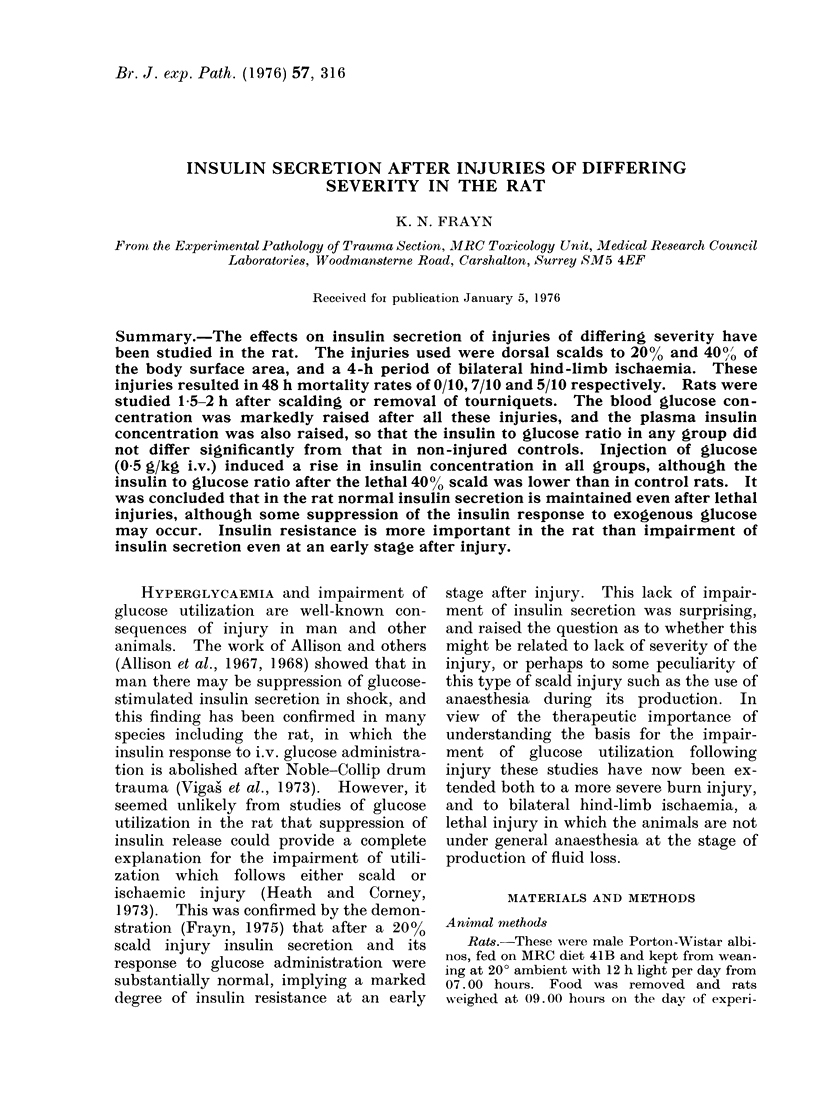
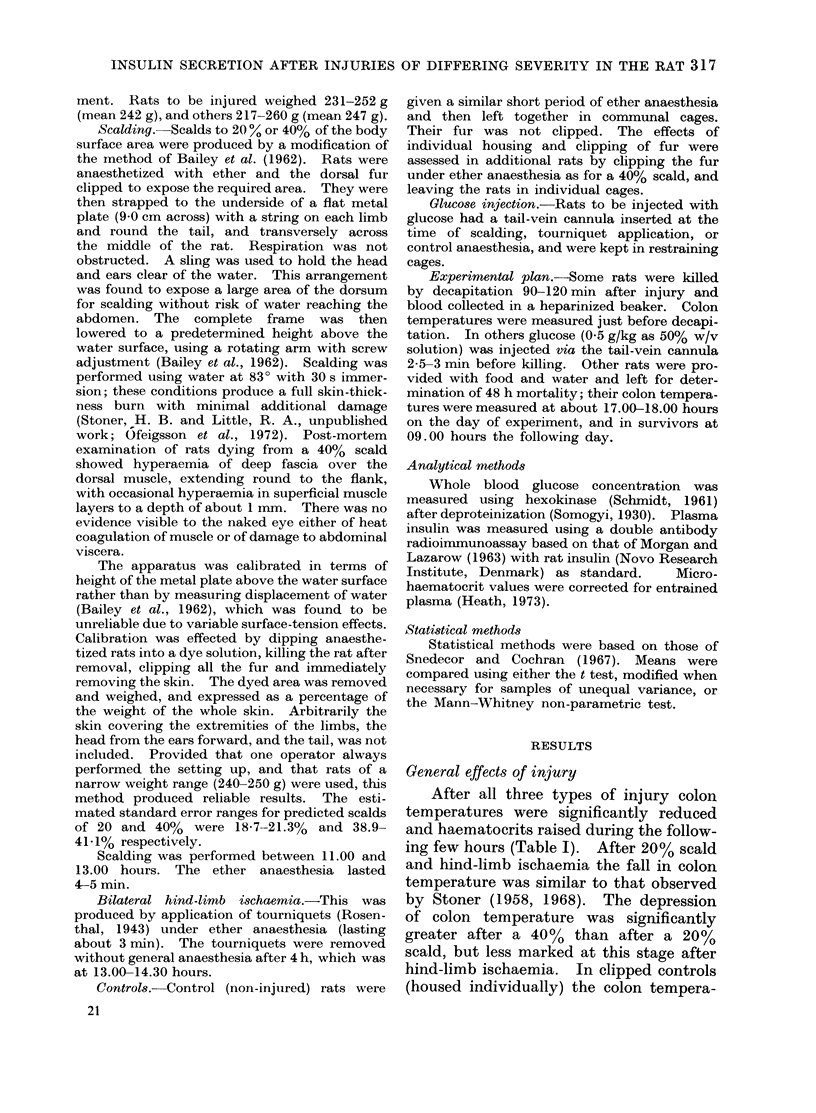
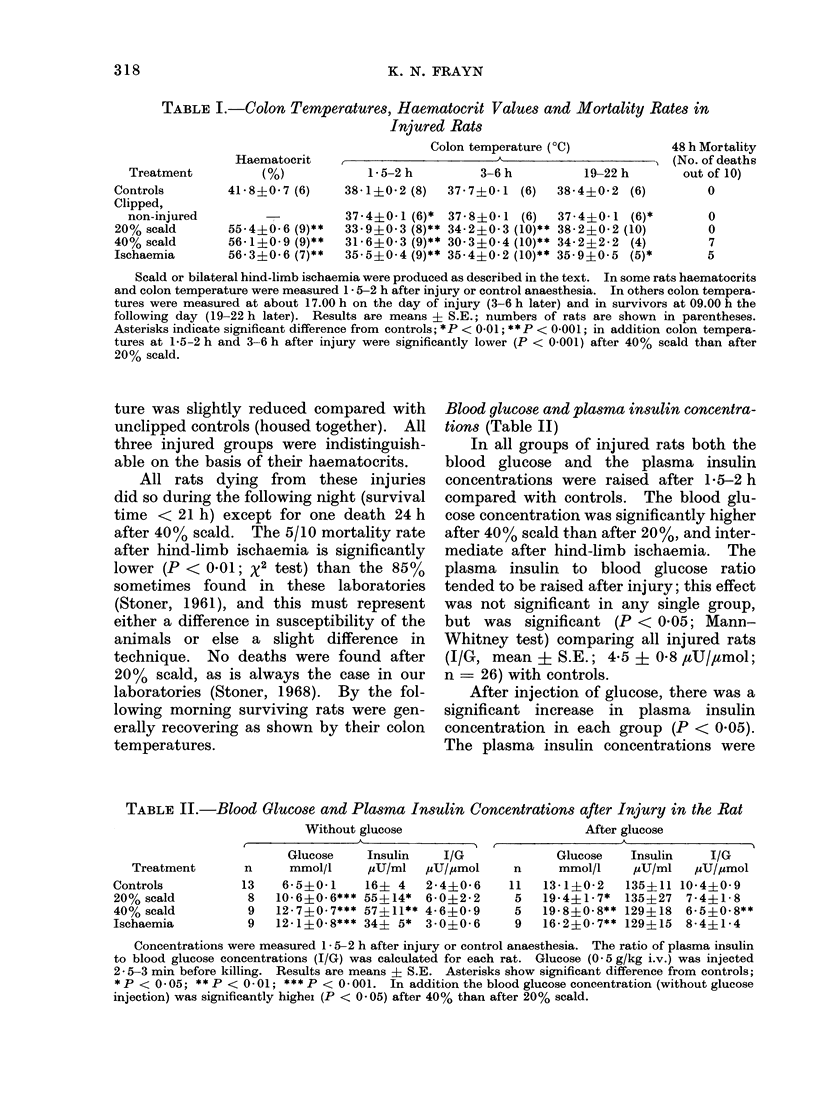
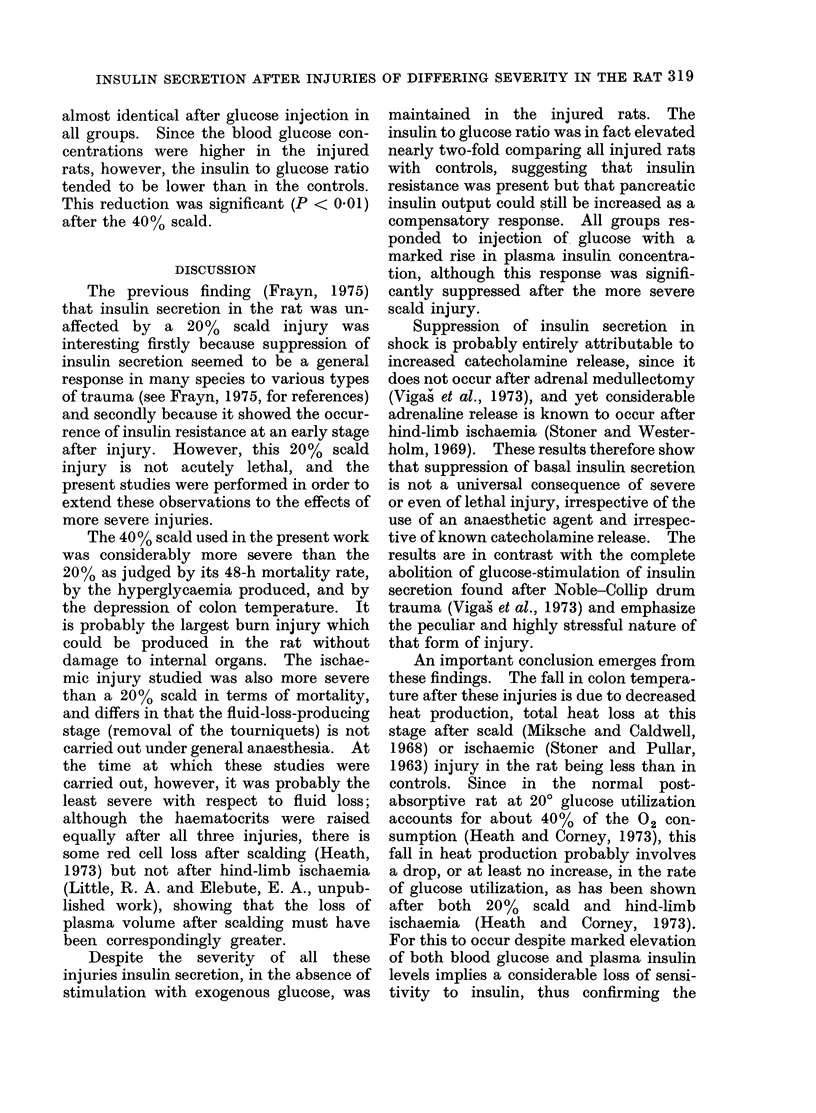
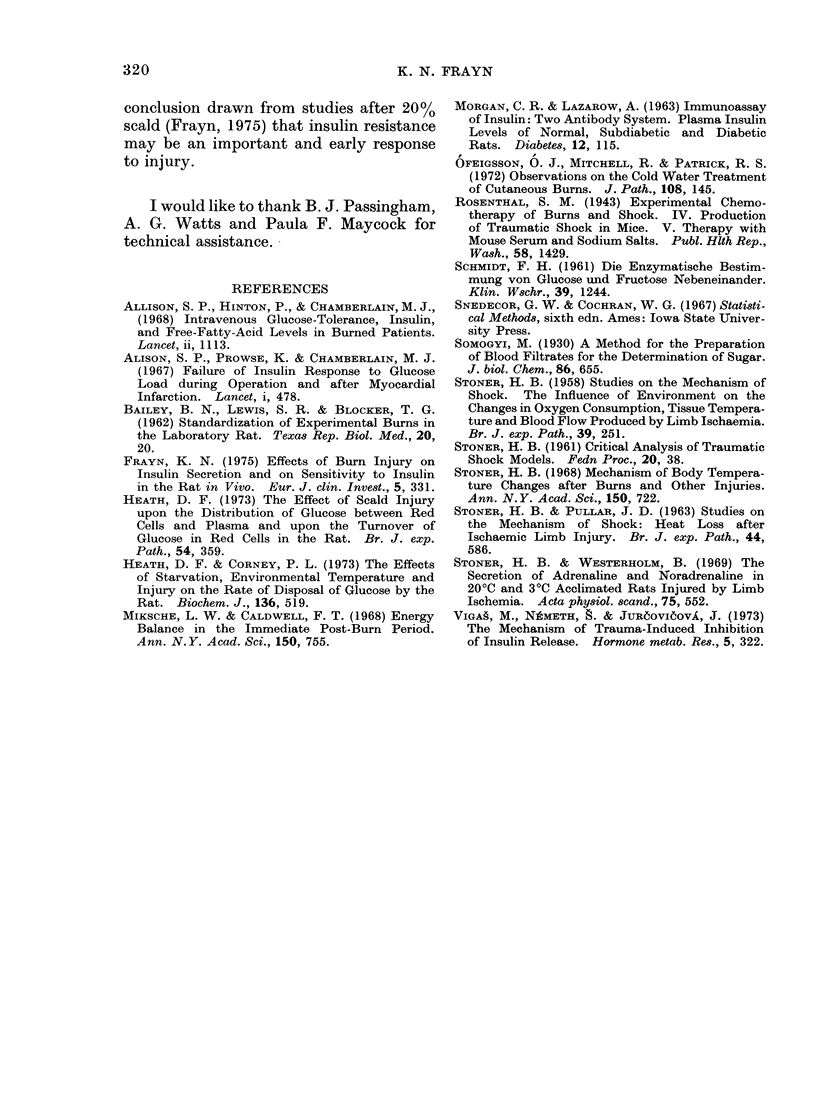
Selected References
These references are in PubMed. This may not be the complete list of references from this article.
- Allison S. P., Hinton P., Chamberlain M. J. Intravenous glucose-tolerance, insulin, and free-fatty-acid levels in burned patients. Lancet. 1968 Nov 23;2(7578):1113–1116. doi: 10.1016/s0140-6736(68)91581-x. [DOI] [PubMed] [Google Scholar]
- Allison S. P., Prowse K., Chamberlain M. J. Failure of insulin response to glucose load during operation and after myocardial infarction. Lancet. 1967 Mar 4;1(7488):478–481. doi: 10.1016/s0140-6736(67)91097-5. [DOI] [PubMed] [Google Scholar]
- Frayn K. N. Effects of burn injury on insulin secretion and on sensitivity to insulin in the rat in vivo. Eur J Clin Invest. 1975 Jul 29;5(4):331–337. doi: 10.1111/j.1365-2362.1975.tb00462.x. [DOI] [PubMed] [Google Scholar]
- Heath D. F., Corney P. L. The effects of starvation, environmental temperature and injury on the rate of disposal of glucose by the rat. Biochem J. 1973 Nov;136(3):519–530. doi: 10.1042/bj1360519. [DOI] [PMC free article] [PubMed] [Google Scholar]
- Heath D. F. The effect of scald injury upon the distribution of glucose between red cells and plasma and upon the turnover of glucose in red cells in the rat. Br J Exp Pathol. 1973 Aug;54(4):359–367. [PMC free article] [PubMed] [Google Scholar]
- Miksche L. W., Caldwell F. T., Jr Energy balance in the immediate post-burn period. Ann N Y Acad Sci. 1968 Aug 14;150(3):755–765. doi: 10.1111/j.1749-6632.1968.tb14727.x. [DOI] [PubMed] [Google Scholar]
- Ofeigsson O. J., Mitchell R., Patrick R. S. Observations on the cold water treatment of cutaneous burns. J Pathol. 1972 Oct;108(2):145–150. doi: 10.1002/path.1711080208. [DOI] [PubMed] [Google Scholar]
- SCHMIDT F. H. [Enzymatic determination of glucose and fructose simultaneously]. Klin Wochenschr. 1961 Dec 1;39:1244–1247. doi: 10.1007/BF01506150. [DOI] [PubMed] [Google Scholar]
- STONER H. B., PULLAR J. D. STUDIES ON THE MECHANISM OF SHOCK: HEAT LOSS AFTER ISCHAEMIC LIMB INJURY. Br J Exp Pathol. 1963 Dec;44:586–592. [PMC free article] [PubMed] [Google Scholar]
- STONER H. B. Studies on the mechanism of shock: the influence of environment on the changes in oxygen consumption, tissue temperature and blood flow produced by limb ischaemia. Br J Exp Pathol. 1958 Jun;39(3):251–277. [PMC free article] [PubMed] [Google Scholar]
- Stoner H. B. 3. Metabolism, heat loss and toxic factors. Mechanism of body temperature changes after burns and other injuries. Ann N Y Acad Sci. 1968 Aug 14;150(3):722–737. doi: 10.1111/j.1749-6632.1968.tb14725.x. [DOI] [PubMed] [Google Scholar]
- Stoner H. B., Westerholm B. The secretion of adrenaline and noradrenaline in 20 degrees C and 3 degrees C acclimated rats injured by limb ischemia. Acta Physiol Scand. 1969 Apr;75(4):552–564. doi: 10.1111/j.1748-1716.1969.tb04410.x. [DOI] [PubMed] [Google Scholar]
- Vigas M., Németh S., Jurcovicová J. The mechanism of trauma-induced inhibition of insulin release. Horm Metab Res. 1973 Sep;5(5):322–324. doi: 10.1055/s-0028-1093935. [DOI] [PubMed] [Google Scholar]


